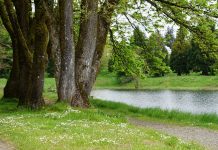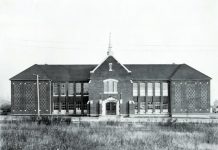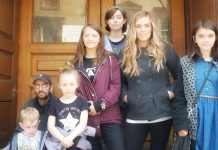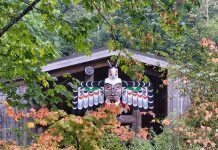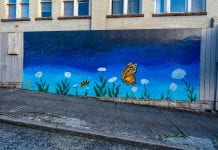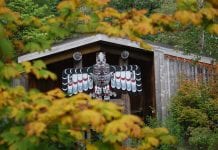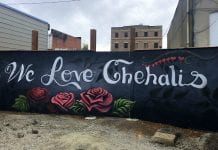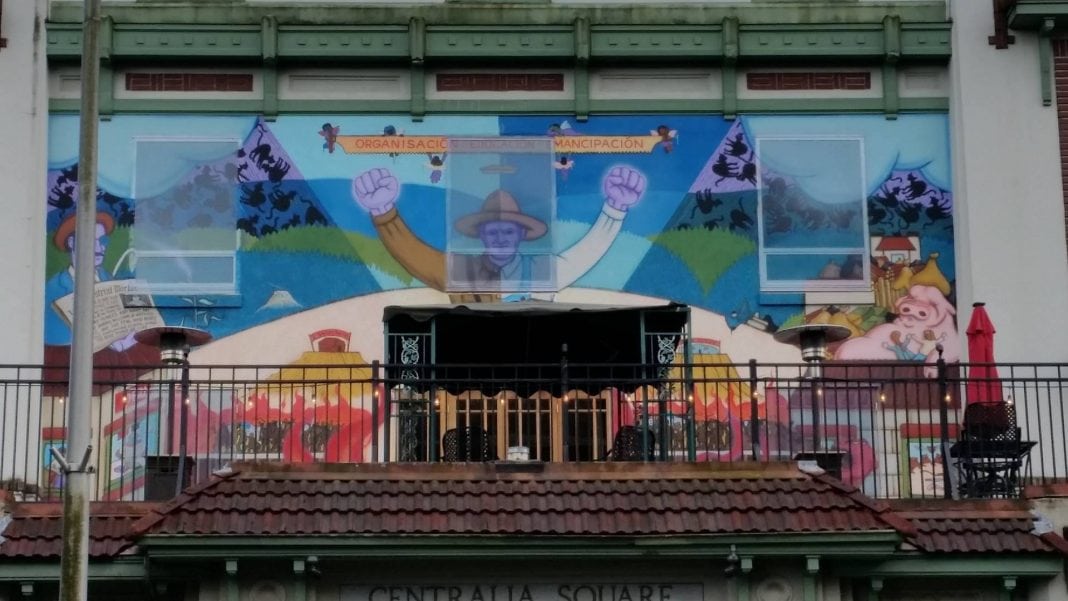Walking through the streets of downtown Centralia, or even just driving through, most locals won’t take a second look at the community art installed around town. Or if they do, they don’t know the rich history behind each painting and statue that makes its home in the downtown area.
 But knowing a bit about the history of the artwork you see everyday helps make it all that much more interesting, because it’s a fact—Centralia’s artwork has some history.
But knowing a bit about the history of the artwork you see everyday helps make it all that much more interesting, because it’s a fact—Centralia’s artwork has some history.
George Washington Mural
One such painting holds a special significance and it’s hard not to notice when driving or walking down Pearl Street. An enormous mural of a man sitting with his dog looks proudly out at us from the side of Key Bank. Believe it or not, thanks to that man, George Washington (and, no, not president George Washington), Centralia is the flourishing little city it is today. Washington is Centralia’s (formerly known as Centerville) founding father. Born in Frederick County, Virginia, in 1815, Washington’s father was a black slave who was sold and taken from the area. His mother gave him to a white couple, Anna and James Cochran, to be raised shortly after his birth.
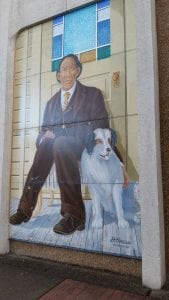
As an adult, Washington attempted several business ventures in Missouri and Illinois, but became disheartened by the discriminatory laws at the time. By 1850, he and the Cochrans headed west for better opportunities and eventually landed in the soon-to-be-named Washington territory. In order to bypass territory laws forbidding African Americans from buying land, the Cochrans purchased 640 acres and deeded it to their son. After the Cochrans passed, Washington married Maryjane Cooness in his 50s.
The two knew their land was special in location. Their plot of land marked the halfway point on the new Northern Pacific railroad built in 1872, between Kalama and Tacoma. They plotted for their town, filed official paperwork at the county courthouse in Chehalis, and the rest his Centralia history. You can read more about George Washington here.
The Resurrection of Wesley Everest & The Sentinel
Two pieces of art that are not only opposite each other in location, but also in two sides of a bloody argument are just down the road from the George Washington mural. The Centralia Massacre is a dark part of the town’s history. It is forever memorialized through a statue in George Washington Park behind the library and a bright, chaotic-looking mural of a man with fists raised high on the Centralia Square Grand Ballroom & Hotel building. For anyone who doesn’t know the history of the massacre, it began with a parade down Tower Avenue on November 11, 1919, the first anniversary of the end of WWI. The townsfolk were celebrating with veterans walking in the parade.
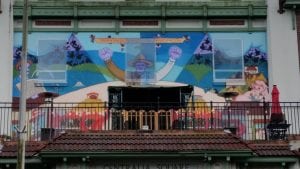
As the parade was turning around, there was chaos—what happened next is widely disputed. A labor union known as the Industrial Workers of the World (and nicknamed the Wobblies) either began shooting the veterans in protest, or some say the veterans charged the building the Wobblies were held up in. Nevertheless, it resulted in four veteran shooting deaths. One of the fleeing Wobblies, Wesley Everest, was arrested after shooting and killing a young veteran pursuing him, but was dragged out of jail by angry townsfolk, beaten, shot and hung by the Chehalis River Bridge. No was tried for his murder and his mural in downtown Centralia serves as a reminder.

“The Resurrection of Wesley Everest,” painted in 1997, has multiple symbolic elements including the raining black cats, which represent “sabo tabbies,” sabotage of capitalist enterprises the Wobblies fought against, and the fat pig that represents the “capitalist pigs” the Wobblies also fought against. Everest himself is portrayed half in his logger uniform and half in his soldier uniform to show his experience in both professions.
“The Sentinel” is the memorial statue in George Washington Park dedicated to the four veterans who lost their lives that day. It shows a lone soldier in WWI attire with his rifle by his side. And on either side, there are individualized memorial plaques of the four soldiers and words written in remembrance of the lives cut short. You can read more about the symbolism behind the mural here.
Buffalo Bill and his Wild West Show

Centralia has many other murals and art installations, like the one on the side of the Centralia Fox Theatre of the then upcoming “Buffalo Bill and his Wild West Show.” In it, Bill sits regally atop his white horse, rifle in hand and ready to ride away from the Indian teepees behind him. The bottom of the mural advertises the show, saying it’s “Coming to Centralia September 14, 1910.” Buffalo Bill and his fellow actors would stage Grand Buffalo Hunts, though the actors were the genuine article—actual Indians and frontier men. They would stage shootouts and would sometimes involve horses. The small-scale shows were popular from the late 1800s to July 1913 when the show went bankrupt, but Bill left his mark on Centralia and the history of his show can be read about in further detail here.
Centralia’s historic murals come to life when you discover the wealth of information behind them. There are several other murals around downtown Centralia and if you’d like to look for them so you can find the history behind them, visit the City of Centralia website.







